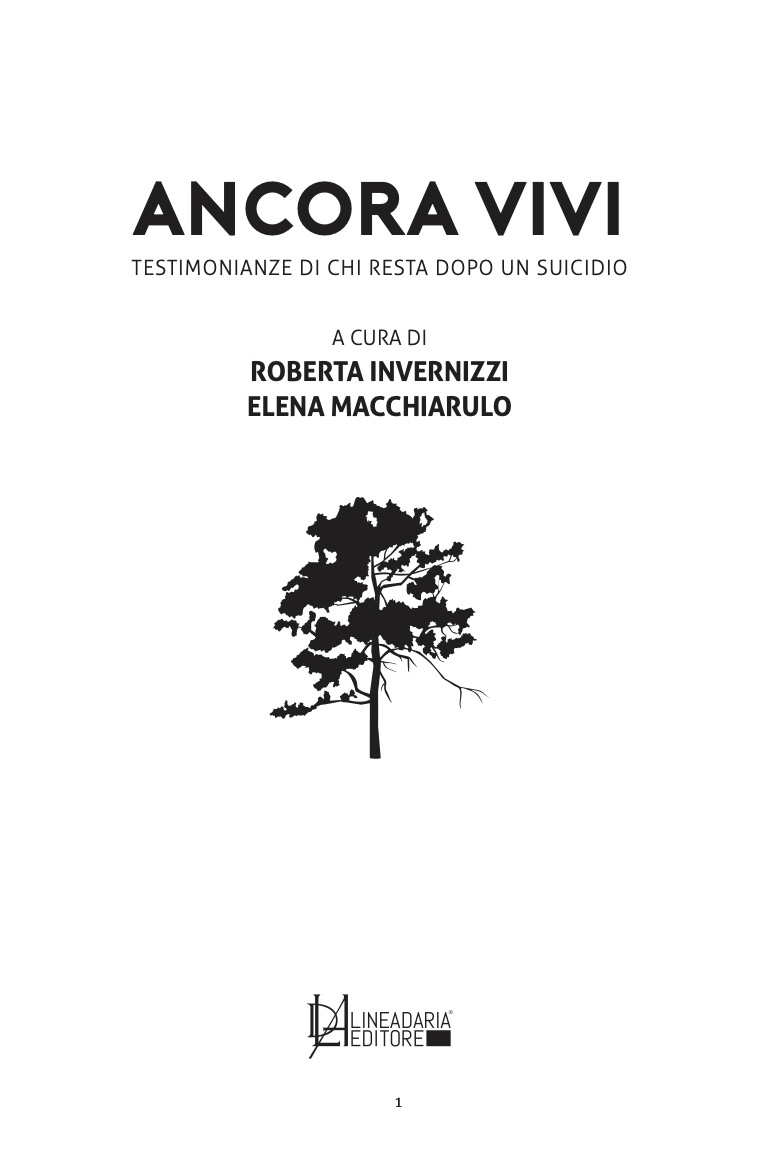
Graduated in Philosophy with a thesis on historical research on utopia, in 2017 she attended the ISTUD Master’s Degree in Applied Narrative Medicine – 5th Edition; she followed specialisation training courses in human resources, training and conflict mediation in the healthcare context. For about 12 years she has been a consultant at the Training Structure of the ASL of Biella for narrative medicine/medical humanities projects, in particular for narrative interview activities, digital storytelling and editing projects dedicated to oncological pathologies, Parkinson’s, Alzheimer’s and others.
Self-inflicted violence is only seemingly a punctiform event, a movement, an act that ends with the death of its perpetrator, piercing the everyday life of the communities to which it belongs without generating any bloodshed.
Beyond all psychologism and all macabre and voyeuristic chatter, that is to say, beyond those approaches that remain pertinaciously linked to the suicide experience among those who witness it mostly from afar, what strikes me most about self-inflicted violence is its capacity to expand like a gas around the deflagration. Contrary to what may appear, perhaps even in the feelings of those who carry it out, it is in fact not a matter of gestures, of self-inflicted acts, enclosed in a tragic here and now that concerns only its subject-object. The laceration produced by the killing of oneself is one that can devour, swallowing up energies and hopes in a dark vortex of guilt and anger that often becomes a narrow trap in which individual history stagnates and ruminates itself.
The traversal of suicide bereavement can be long and bumpy. For it is a matter of overcoming, by passing through it, various forms of violence.
The violence of the unexpected. Suicide often tears apart scenarios in apparent, precarious, seesaw, but nonetheless balanced equilibrium. The picture that was (remained) hanging has fallen. Suicide invests and overwhelms.
The violence of silence. Those left behind find themselves speechless, among interrupted conversations that can never be resumed. And even when the person who takes his own life leaves a message, an opaque void opens up after the last of those words.
The violence of finality. Suicide is peremptory, irreversible, without return, without room for dialogue, confrontation, negotiation. It imposes itself.
The violence of the enigma. The questions that arise from a suicide chase each other, intertwine, multiply, around the incandescent core of “why?”. And it is not a game to search for traces to find answers, because there are no rules to help and no prize to be had.
The violence of passivity. He who takes his own life decides for himself and for all. Together, at the same moment, with or without awareness. He who remains, nothing can. He contemplates an absence and tries to pick up the pieces and reconstruct a form of normality, as the only possible action.
The violence of scandal. The choice to take one’s own life is profoundly perturbing, contrary to what one wants to be ‘natural’, namely love or, in any case, the bond with life.

The condition of the so-called ‘survivors’, those who remain, is very complex and develops over time in different ways. What they have in common is the obligatory confrontation with a dramatic event that has unleashed extremely intense violence. The risk of a vicious circle being set in motion can be prevented and/or managed through psychotherapeutic interventions, which can be integrated through self-help initiatives, and can find resources through storytelling projects that allow one to put one’s own experience into words and re-elaborate it.
Storytelling is well known for its effectiveness as a coping strategy, as a tool and pathway that fosters a ‘nurturing’ relationship with oneself, one’s memories and experiences, one’s emotions, fears and desires, one’s vision of the past and future, and the dimension of the present. The experience conducted in Biella through the ‘Still Alive’ project, with the collaboration of the Crisis Centre activated by the ASL BI Department of Mental Health, made it possible to explore the value of this in the parched territory of survivors of the suicide of their own husband, daughter and friend, brother, mother, grandmother. Even of their own patients, in the case of some psychotherapists. Even a carabiniere wanted to tell.
We asked them to choose one or more haiku by Kobayashi Yataro, who became a monk and took the name Issa (“cup of tea”), an author whose existence was marked by numerous sufferings, from a shortlist of ten: a sort of multiple track in which the poetic language poses itself with an almost questioning delicacy and invites narration with its discreet light. We asked them to write freely, without constraints of space or form, starting from the evocations emanating in each of the chosen verses. We collected narratives in poetry and prose, structurally pondered and impulsively chaotic, with factual and descriptive or metaphorical and evocative language, words that were frayed, sorrowful, furious, withered, thoughtful, indignant, dry. We recognised metaphors and symbols and applied the models that in narrative medicine allow us to grasp the colour and trend of narratives: Kleinman, Launer and Bury in particular guided us in analyses that in reality were intended to be immersive readings, conducted through the assumption of a posture of proximity that, in truth, developed spontaneously. Vibrant testimonies. Healing embraces. Perhaps.

This book is of great value in that it promotes what is most lacking in the field of suicidology, namely the subjective experience, the phenomenology of suicide and of losing a loved one to suicide. I have no doubt that the content of the stories included in this volume will bring important knowledge for the benefit of suicide prevention and assistance to those who witness suicide.
Maurizio Pompili, Professore Associato di Psichiatria e Direttore della Scuola di Specializzazione in Psichiatria, Università La Sapienza, Roma.
* the book it’s in Italian
